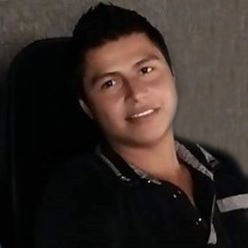The power of habits
Today we will talk about the power of habits in people, we will know what the habit loop is, how they act, how to create new habits, the golden rule to change them and why change occurs. We will also see the importance they have on people and that if you follow the rules that I am going to mention below, you will go very far. Let us begin.
Habits are automated behaviors of people that according to Charles Duhigg, in his book The Power of Habits, most do without thinking. It is a book which I recommend either to improve or implement new habits, in addition this author was a winner of a Pulitzer Prize, for which he is well supported. There are also other recommended books within this category that are: Atomic habits and 7 habits of highly effective people.
Charles Duhigg mentions in his book that habits cannot be eliminated only replaced. Most of us live on automatic pilot, because in the beginning we had to learn to do something, and then later our mind adapted and made it a routine. Because of this, people are full of habits and on a daily basis we do not consciously realize what we do, from getting up, making bed, viewing our social networks, etc.
The habit loop
Charles duhigg mentions that the habit loop consists of 3 parts.
The first is the SIGNAL, which tells the brain that it can go into automatic mode and the habit it will use.
The second is the ROUTINE, which can be physical, mental or emotional.
The third is the REWARD, which is the satisfaction we seek. It helps the brain decide whether this habit is worth remembering or not.
The key to breaking a permanent change is breaking the habit into 3 parts. When we know why we carry out certain actions, it is much easier to replace that component with a positive change. The goal is to maintain the signal and the reward but change the routine. For example, when you go to work and it's time to eat, we sometimes eat fast food. Here the goal could be to replace eating fast food or on the street, bringing your own food, in addition to being healthier.
So how do we change specifically? The author mentions that there is no series of specific steps that guarantee results for all of us, so there is no general answer, each person has different signs or wishes. However, the author mentions 4 phases to try to change habits.
1 Identify the routine: The objective is to identify how we go from a signal to following a habit that we do not want. The more we know about the routine, the easier it will be to change it.
2 experiment with rewards: The goal is to identify the reason why we completed a routine. We need to understand that yearning makes us behave in a certain way, in this phase we will have to adjust the habit so that they give us different results. So we can discover why we follow that particular habit.
3: isolate the signal. All habits have a trigger that tells our brain that we want a certain reward. The trick is to identify the signal for each specific action. In this case, the author mentions that the most common signals are location, time, emotional state, other people and what action precedes the signal. Making life easier Five key questions to discover the signal: Where are you, what time is it, what is your emotional state, who is around, and what action precedes the signal.
4: have a plan We cannot change the sign or the reward. But we can change the routine in this final step, we must follow the routine that gives us the same reward, without following the negative habit, the easiest way to do it is to have a specific plan of action for when we experience the signal. Collecting the information from the previous questions. We will create a step-by-step plan to know how to act when we feel the need to follow a bad habit.
The author mentions the following, in order to make the change. For the habit to be installed, we have to believe that change is possible, normally that belief only arises with the help of a group. For example, if you want to lose weight, study your habits to determine why you really get up every day from your work table to go to eat something and then find someone with whom you can take a walk or talk, instead of going to the cafeteria. A group that you can pursue your weight loss goals with or someone who would rather have a stockpile of apples than have some fries.
If you want to change your habits, you must find an alternative routine, and your chances of success will increase dramatically when you commit to change as part of a group. Having faith is essential, and it is produced as a result of a group experience, even if that community is only made up of two people. We know that change is possible, and as scientists have discovered, it's not just people's lives that change when they take care of their habits. Also companies, organizations and communities can do them.
Resume: As you can see, it is a very practical book and that in the end everything depends on ourselves and how much we are willing to make an effort. So I invite you to start taking action now.
Become a member
Get the latest news right in your inbox. We never spam!
